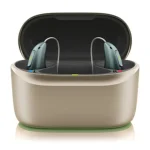Adjusting to hearing aids can transform your hearing loss experience and open the door to better communication and a richer connection with the world. However, like any technological device, hearing aids can come with their own set of challenges. While these devices are designed to enhance hearing, some side effects may arise as part of the adjustment period or due to individual sensitivities. Recognizing these potential effects helps manage expectations and ensures better hearing health.
Initial Discomfort During Adjustment
For those new to wearing hearing aids, the sensation of something in the ear canal may initially feel foreign or uncomfortable. This is a normal reaction as the body adapts to the presence of the device. The feeling typically subsides as wearers become accustomed to their hearing aids. Opting for a proper fitting by a hearing health professional during a hearing test can minimize this discomfort. Select devices designed for specific ear shapes to ease the adjustment period.
Increased Awareness of Background Noise and Feedback
One common side effect of hearing aids is an increased sensitivity to background noise. Individuals with hearing loss often grow accustomed to quieter environments, and hearing aids amplify both wanted and unwanted sounds. This sudden influx of environmental noises, such as humming appliances or distant conversations, may feel overwhelming at first. Gradual exposure and fine-tuning the settings with a hearing health professional help strike a balance that matches the user’s daily listening needs.
Hearing aid feedback, often experienced as a whistling sound, can be frustrating. This side effect usually happens when amplified sound escapes from the ear canal and re-enters the device’s microphone. Factors such as improper fit, earwax buildup, or a malfunctioning device may contribute to this issue. Regular maintenance, cleaning, and ensuring a snug fit go a long way in reducing feedback-related problems.
Skin Irritation and Allergic Reactions
Skin irritation around the ears or in the ear canal can occur, particularly for those with sensitive skin or allergies to certain materials. Hearing aids made of hypoallergenic materials can help reduce the risk of irritation. Also, maintaining a clean device prevents the buildup of dirt or bacteria that might contribute to discomfort. Regular follow-ups with a hearing health professional can ensure that the fit remains secure without causing undue pressure or rubbing.
Fatigue from Listening Effort and Temporary Headaches
Using hearing aids, especially in noisy environments, can lead to listening fatigue. This is a side effect of the brain working harder to process amplified sounds and discern speech from background noise. Over time, the brain adapts to the improved auditory input, and the feeling of exhaustion diminishes. Schedule quiet breaks throughout the day and attend follow-up appointments to fine-tune settings and alleviate this challenge.
For some individuals, adjusting to amplified sounds may initially cause headaches or exacerbate existing tinnitus. These side effects are usually temporary and lessen as the auditory system becomes accustomed to the hearing aids. Adjustments made during a hearing health exam can lower the amplification levels to a more tolerable range, providing relief without compromising the effectiveness of the device.
Wax Buildup
Hearing aids can inadvertently encourage earwax buildup by blocking natural airflow in the ear canal. This can lead to discomfort or even temporary hearing loss if the wax accumulates excessively. Regular cleaning of the ears and the device is important to prevent blockages. Consulting with a hearing health professional ensures that any cleaning methods used do not harm the delicate structures of the ear.
Sensory Overload in Social Settings
Social gatherings or public spaces with high noise levels can sometimes feel overwhelming for hearing aid users. While hearing aids are designed to improve communication, they may amplify a wide range of sounds, making it challenging to focus on specific conversations. Modern devices often come equipped with features like directional microphones or noise-canceling technology, which can be adjusted to make these environments more manageable.
Adjustments Ensure Long-Term Comfort
Despite these temporary side effects, hearing aids remain powerful for those with hearing loss. Regular visits for a hearing health exam and open communication with a hearing health professional ensure the device meets individual needs while minimizing challenges. Addressing these issues promptly and thoroughly improves hearing ability and confidence in daily interactions.






